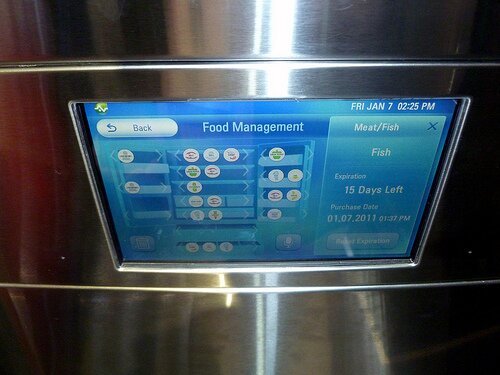I first encountered the horror stories of smart appliances when a client presented a list of error codes and requested articles on how to troubleshoot the errors. Ideally, they’d fix things themselves, but the articles would inform them when it was necessary to call for service or replace parts. In my research for the articles, I realized how much of a headache smart appliances are relative to their dumb counterparts. Here are a few of my observations.
Many glitches and errors can be solved via a reboot the same way we reset our phones and reboot our computers … but most smart appliances lack an easy reset button. A hard reboot of a computer is turning it off and back on. A hard reboot of your smart fridge is unplugging it from the wall, while your smart oven may only be reset by turning it off at the breaker.
One set of error codes were directly related to the smart appliance’s inability to connect to the internet. One error was caused by a photo frame built into an advanced fridge not being able to access the customer’s online file directory. I never thought it would be necessary to look up how you’d give your fridge access to your digital library. Conversely, this feature is on the way out because you can stick a digital photo frame or full tablet to your fridge that has far more functionality and mobility.
Refrigerators in particular have had the ability to warn you of maintenance needs like “Change my water filter” or “Problem with ice maker”. The grey area is the ability of smart appliances to actually call for service. Talk about a business case for hackers. “Hi, I’m here to fix that issue with your fridge,” says the would-be thief dressed up as a repairman. Or the company that handles such maintenance shortens the maintenance interval to generate more revenue.
Smart devices bring in circuit boards like EEPROMs that cost as much as a fancy scientific calculator to replace, while full motherboards in the top of the line refrigerators in particular cost up to a third of the cost of a new fridge. Unlike the typical desktop computer, it is exposed to moisture and cold at best, water leaks and electrical surges at worst. No wonder so many customer solutions start with “turn it off and on, then power cycle it” in an effort to avoid telling them you’ll want a hundred dollar sensor because the alternative is a $500+ mini-computer.
A subtle issue is the increased complexity of maintenance. Just as car repair requires a de facto college degree due to the computer under the hood, appliance repair beyond replacing water filters and plug-and-play ice makers requires a more advanced education. The smarter the appliance, the dumber the home owner when it comes to troubleshooting and repair.
I have yet to hear about serious efforts to prevent malware residing in the fridge and sending out spam. Then again, we may not notice it because we think it is just another ad on the digital picture frame on the fridge or it is hidden behind an error message because it isn’t in the type of home it is designed for.
Just don’t evolve the smart appliances into smart alecks that try to lecture owners on eating habits and personal routines, or you’ll guarantee people ditch the smart appliances with somewhat better energy and water economy for their dumb counterparts.
****
Check out Tamara Wilhite’s Amazon Author Page and see her on Hubpages.
Photo by David Berkowitz 



Comments
Leave a Reply